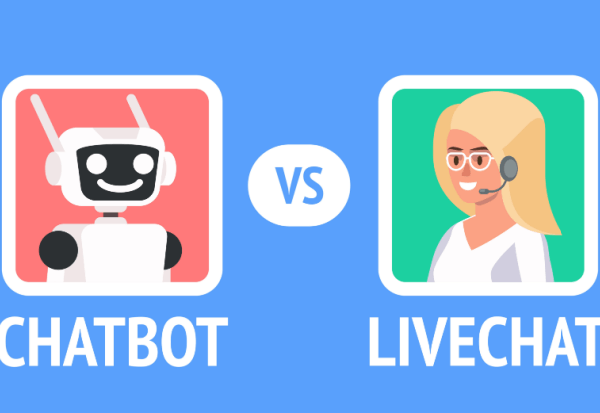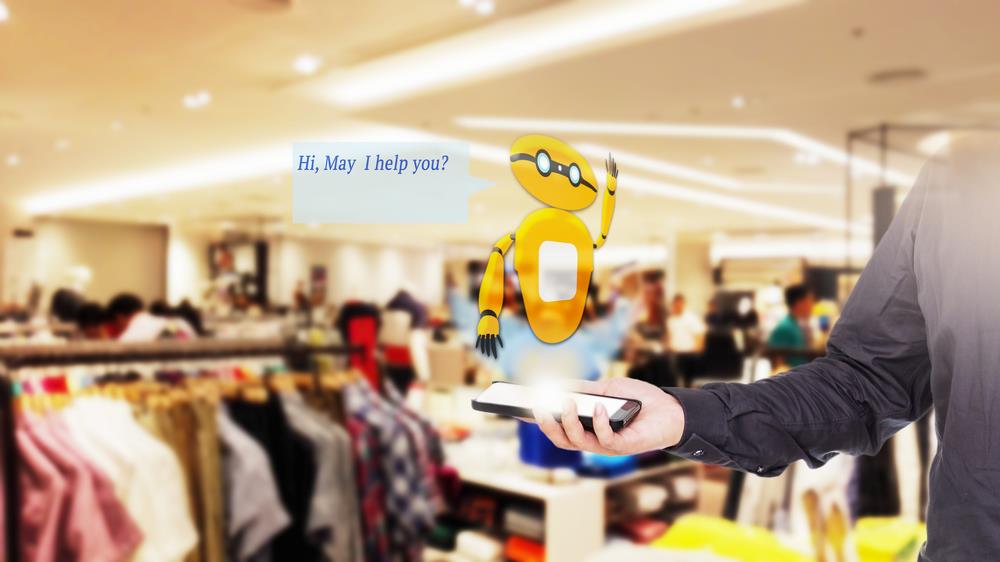Chatbot
Chatbot has become the contact point of the business world nowadays. Chatbots are computer programs that sustain a dialogue with the user in natural language, understand the intent of the user, and offer answers based on the organization’s business rules and records. This chatbots use Artificial Intelligence to interpret words, helping them to comprehend human voice. They can decode verbal or written questions and provide the necessary information or direction. Many consumers first encountered chatbots via dialog boxes on business websites. Chatbots also communicate verbally with users, such as Siri on the Apple iPhone or the Alexa Voice Service on the Amazon. Chatbots are constantly being used by companies to improve their customer experience.
It’s estimated that chatbots can drive more than $8 billion in savings by the year 2022 for Retail, eCommerce, Banking and Healthcare alone. (Juniper Research)
Live chat
There is sometimes no replacement for the insight that live agents can have or the type of intelligence that a question takes imagination or intuition to overcome. It is also the human capacity to draw comparisons with common interactions in these cases that enable challenges to be overcome in difficult or unique circumstances.
Therefore, when the need arises, it is necessary for a chatbot to be able to seamlessly switch to a live agent. Ensuring that all the data already gathered during the discussion is still transmitted so that the client does not have to start anew from the beginning.

History of Chatbots
Chatbots can trace their roots back decades, but it was not until internet adoption became more widespread that chatbots began to be used to serve customer service roles as we know them today.
The Turing Test questions if machines can think, which was asked in his 1950 seminal article, “Computing Machinery and Intelligence” by Alan Turing. In the paper, Turing proposed a test where an interrogator had to determine which player was a human and which a machine through a series of written questions.
The first known chatbot, created in 1966 was Eliza, the purpose of which was to serve as a psychotherapist in a query form to return consumer utterances. It used basic pattern matching and a mechanism for a template-based response. Its conversational capacity was not strong, but at a time when they were not used to communicating with machines, it was enough to annoy people and give them the incentive to start creating other chatbots.
10 key areas where businesses can benefit from chatbots:
- Instant Response
- Drive More Revenue
- Reduce Cost
- Maximize Staff Skills
- Reach New Channels
- Increase Loyalty
- Available 24/7
- Increase Engagement
- Understand the Customer Better
Services we offer at Happiest Minds:
It is clear that COVID-19 accelerated digitization at an unparalleled pace. The need for communication automation is growing across all industries. Nevertheless, I believe that current chatbot technologies have struggled to fulfil standards by concentrating solely on automating communications without incorporating deeper layers. This is where we offer something more than just the conventional chatbot.
Chatbots are penetrating more and more industries dealing in banking, telecom, insurance, etc. But now Chatbots are proliferating in Retail industry and online stores.
Shoppers keep clicking through webpages and navigation bars travelling multiple screens for single product increasing abandoned cart rates. Chatbots fix this product discovery journey.
Chatbot use cases are more applicable to eCommerce, fashion, food, and beverages.
Problem Statement
SAP Commerce provides a readymade platform for eCommerce applications to sell both in B2B, B2C effectively.
However, they face the following challenges:
- Hybris Storefront OOTB does not have any conversational interface for customers and live chat feature to chat with other active customers
- Professionals frequently and repeatedly perform a same task or exchange the same information
- Current process requires engaging expensive resources whose time could be spent on higher value activities
Our customized features on SAP commerce – Chatbot and LiveChat
- Proactive Customer Interaction
- Products Search
- Visual Search
- Live Chat
- Contextual Chat
- Notifications
- Post questions and Suggest.
- Emails
- Always Available
1.Live chat
Live Chats are living, breathing, active societies. The organization can use the platform as a continuous customer feedback platform. Live chat is a valuable opportunity for creating an online community, encouraging the audience to communicate in a position where they understand that their values are shared. Registered users can talk candidly and collaborate with other users by solving the queries posted on the platform.
Any user can post his/her question by tagging the product; the answers/suggests from other users are then informed and submitted to the customer.


2. Visual Search
Humans are incredibly visual beings. We identify images within 13 milliseconds, and 90% of all information received by the brain is visual.
Visual search uses representations of the physical world as a stimulus for web searches. These recommendations can absolutely work when a shopper is browsing for a specific product. This gives seamless product discovery with shoppers now purchasing new but similar styles across vast product catalog.

3. Category\Product Search
This functionality is another perfect implementation of custom search. It allows the consumer the ability to search on the basis of categories, consumers can narrow down their search and get answers in the form of a single comment.
Most online retailers have product ranges. In clothes, there may be male/female types for shirts, skirts, shoes, etc.


4. Contextual chat
This chatbot feature makes it much easier to get information about products, accounts, orders and checkouts. The user can write a single line query like: My account, and the bot will show all the options that the user has for his account.
This is only one of several cases of usage for this feature, other places where it can be used are:
- Product
- Nearby stores
- Product Guarantee
- Discounts and Offers
- Related products
- My Account
- Update Profile
- Update Password
- View Address book, etc.
- Order
- Order status
- Cancel order
- Update delivery address
- Checkout
- Order discounts
- Cancel order
Future of Chatbots


Future of Chatbots
So, the question is: what is the future of the chatbots? Where is the conversational interface going to be five, ten, or twenty years from now?
Chatbots have a long way to go before they can reach their full potential. Yet, with billions of dollars of annual investment and considerable human capital devoted to their growth, chatbots will potentially create significant potential demand in both corporate and customer environments.
As predicted, the global conversational AI market is projected to rise to $15.7 billion by 2024. (with a 30.2 per cent compound annual growth rate). The industry is rising due to the increasing need for AI-powered customer care services and good return on investment (ROI) for businesses. It has become essential for companies to be accessible 24/7 with immediate and customized services in the required language.
However, the chatbot industry is evolving, it is clear that the manner in which companies and customers communicate can only become more consequential.


is Associate Director and SAP Practice Head, Digital Business Services at Happiest Minds. He has around 15 years of experience which includes expertise in eCommerce domain and various platforms. Delivered and successfully managed eCommerce projects in IBM and SAP platforms in multiple geographic locations.






